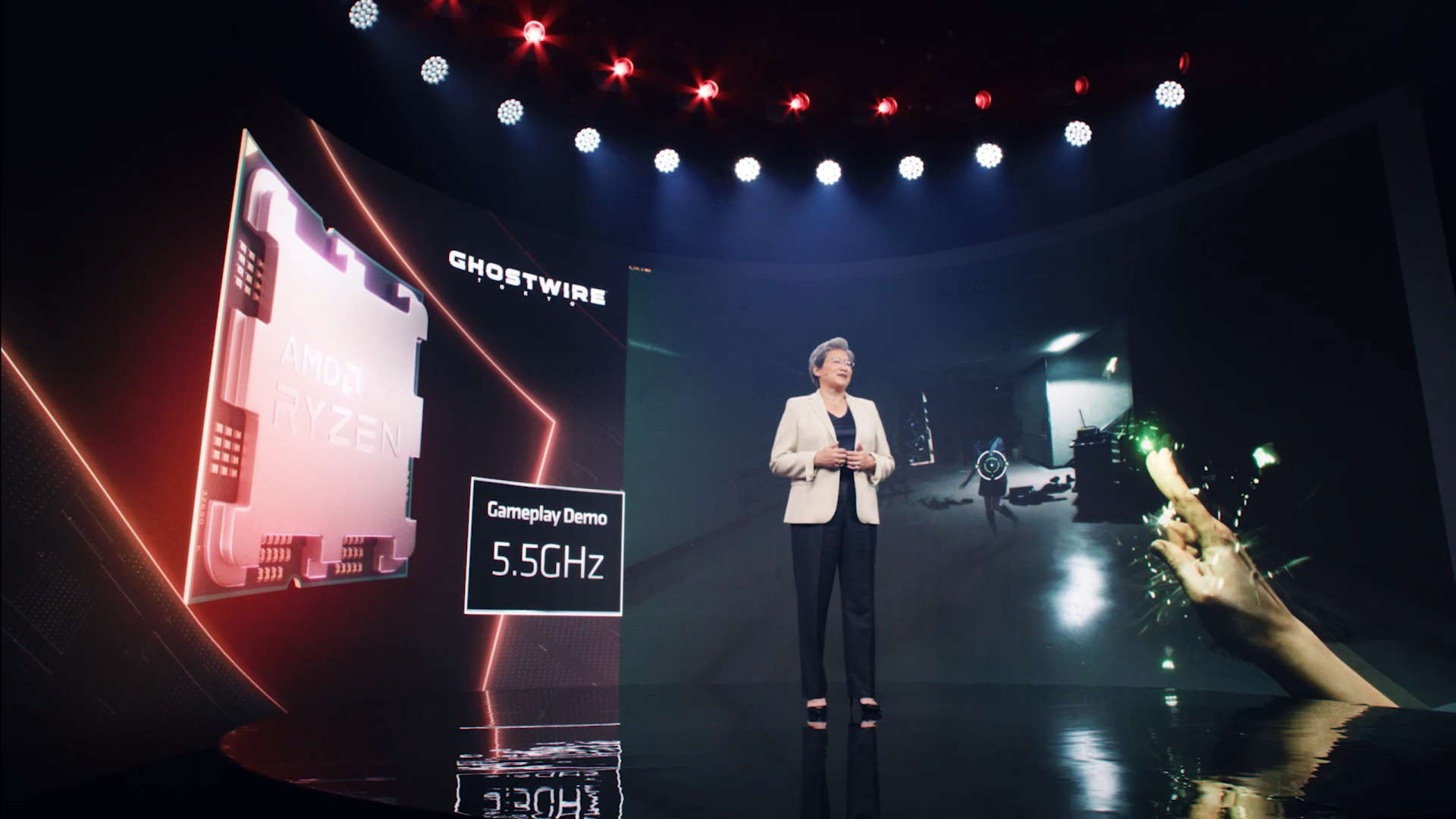AMD demos an unreleased 5.5GHz Ryzen 7000 CPU smashing Intel's Core i9 12900K
At today's AMD Computex keynote the new 16-core Zen 4 processor is shown beating the Alder Lake chip in a Blender render race by being almost a third faster.

AMD has finally taken the wraps off its upcoming Zen 4 processor generation, and the gloves off against the Intel Alder Lake architecture. Dr. Lisa Su took to the stage for the now-traditional AMD CEO keynote for Computex 2022, and showed a pre-production 16-core, 32-thread Ryzen 7000 processor stomping a 16-core, 24-thread Intel Core i9 12900K in the popular Blender rendering software.
The engineering sample completed the test render nearly a third faster than the competing Intel processor from its latest generation.
Promising a greater than 15% single threaded uplift in performance—versus its last-gen Ryzen 9 5950X—this whole new generation of processors is AMD's latest bid to dominate not just the straight computing market, but also the gaming world, too.
Not only did we see the rendering demo on-stage this year, but Dr. Su also showed us the same 16-core Zen 4 chip blazing through Ghostwire Tokyo with its core frequency hitting between 5.3GHz and 5.5GHz.
"We designed Zen 4 to run significantly faster than our previous generation," says Dr. Su, "and that increase in frequency can translate into a smoother gaming experience. And while this is just one example we're really excited for gamers to get their hands on our Ryzen 7000 series."
This is reiterated in our pre-briefing with Robert Hallock, director of marketing for Ryzen CPUs, where he explains that greater than 15% rise in single threaded performance—one of the things that will really help when it comes to gaming—"raises all boats."
"That is a key focus for us, that'll be a combination of both IPC and frequency, and we'll give you the breakdown later in the year."
Keep up to date with the most important stories and the best deals, as picked by the PC Gamer team.
All Ryzen 7000-series chips will have some amount of built-in graphics.
Robert Hallock
Basically, part of that rise in performance is down to the extra clock speed AMD has squeezed out of the optimised TSMC 5nm process, as well as raw instructions per clock (IPC) increases born of the new Zen 4 CPU architecture. Though which has had the greater impact we won't know until closer to launch.
You will also be getting twice the L2 cache as with Zen 3, with 1MB per core being offered across the range, which is likely to help a little with the higher perf, too, eh? Just keep throwing more cache at things, that's modern computing. And it works.
Like with Zen 3 and Ryzen 5000, the new Ryzen 7000 processors will sport a maximum of two Core Complex Dies (CCDs), each packing in eight Zen 4 cores. That means, once again, that we'll be looking at 16 cores as the top of the tech tree this Ryzen generation.
But, while the 5nm core chiplet might seem very familiar, Hallock tells us that "it's actually the I/O die that sees the biggest change."
That's because the 6nm I/O die is where the new RDNA 2 integrated graphics chip lives. This is a first for AMD because, while it has long had its APUs offering iGPUs, the bulk of its processors have shipped without any graphics capabilities at all. That's fine if you've always got a discrete graphics card handy, but for corpo clients, and just trying to boot a rig when you GPU is toast, not having a backup can be a pain.
A pain no longer, however, as Hallock states that "all Ryzen 7000-series chips will have some amount of built-in graphics."
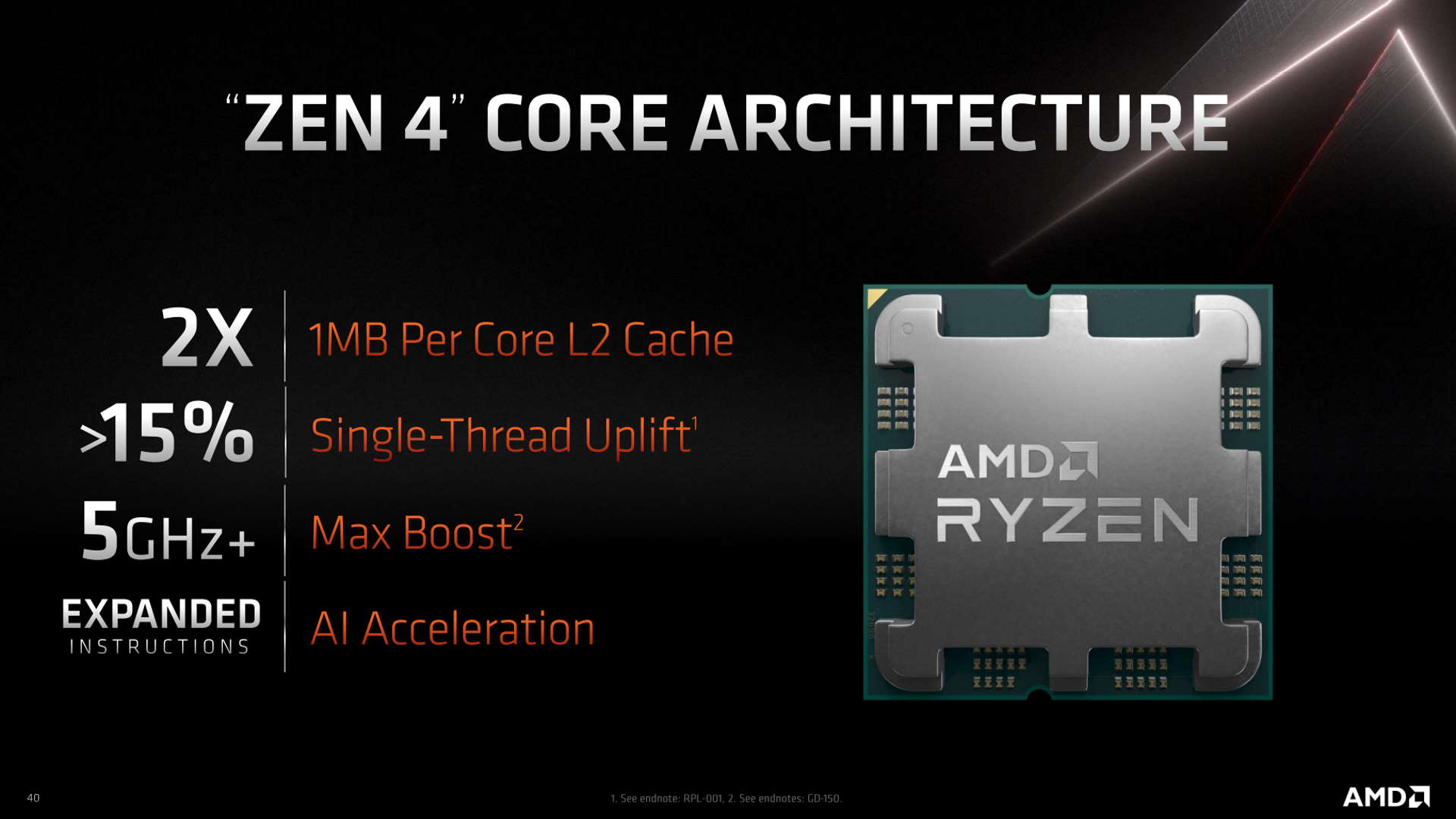

As well as the GPU, the I/O die is also where the DDR5 memory controller lives, and the controller for the PCIe 5.0 interconnect, too. There's also a new low-power architecture in the chip, which pulls in a bunch of tech from the current Ryzen 6000-series laptop processors to help desktop efficiency.
Where the inside has something familiar about it, the outside is a complete departure from AMD chips of old. Gone is the boring square heatspreader, and in comes a funky cutout design and LGA socket connection.
We're told, by AMD's David McAfee, that part of the reason for the switch from the old PGA, chips-with-pins design, to the LGA setup is "to drive more power and greater signal integrity for all of those high-speed IOs." With DDR5 and PCIe 5.0 there is a whole lot of throughput to deal with, after all.

That heatspreader design is not just about aesthetics, either, it's about platform compatibility. Of course these new AM5 processors won't fit in an old AM4 socket, but the design is such that they're still compatible with the AM4 CPU cooler ecosystem.
It's a "very unique design," says Hallock, "that helps us retain cooler compatibility with socket AM4. There is a real method to the design here; it allowed us to keep the same package size, the same cooler keep-out."
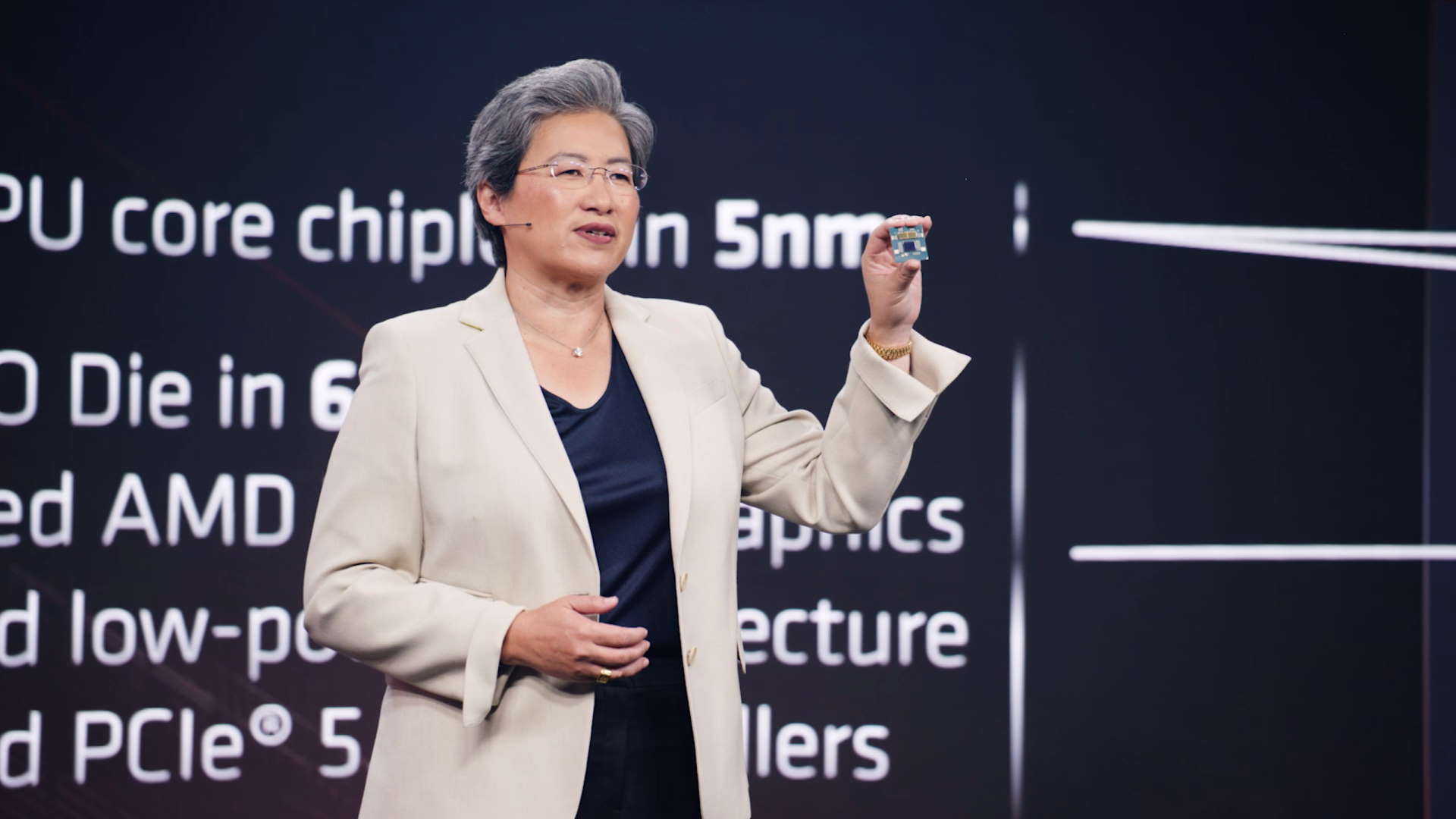
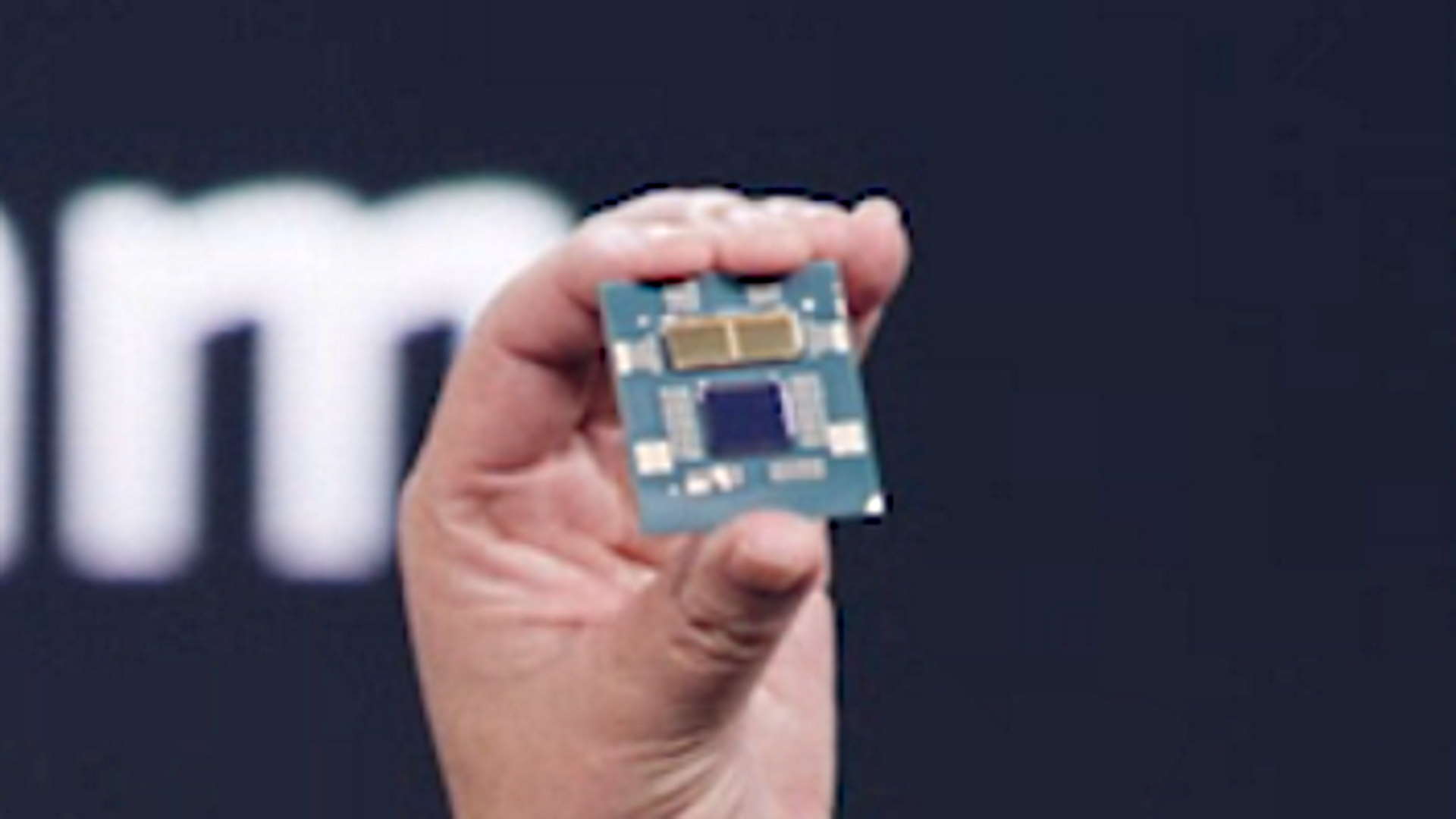
The processor itself is one, admittedly very important part of the equation, but it's nothing without a capable motherboard platform to build off. And here it's a whole new world as we say goodbye to the AM4 platform, the socket which launched 125 unique chips and sold nearly 70 million CPUs.
The new AM5 platform will consist of three separate chipsets: X670 Extreme (or X670E), X670, and B650. All three sport the same 1718-pin LGA AM5 socket, but come with different levels of support for the new technologies on offer.
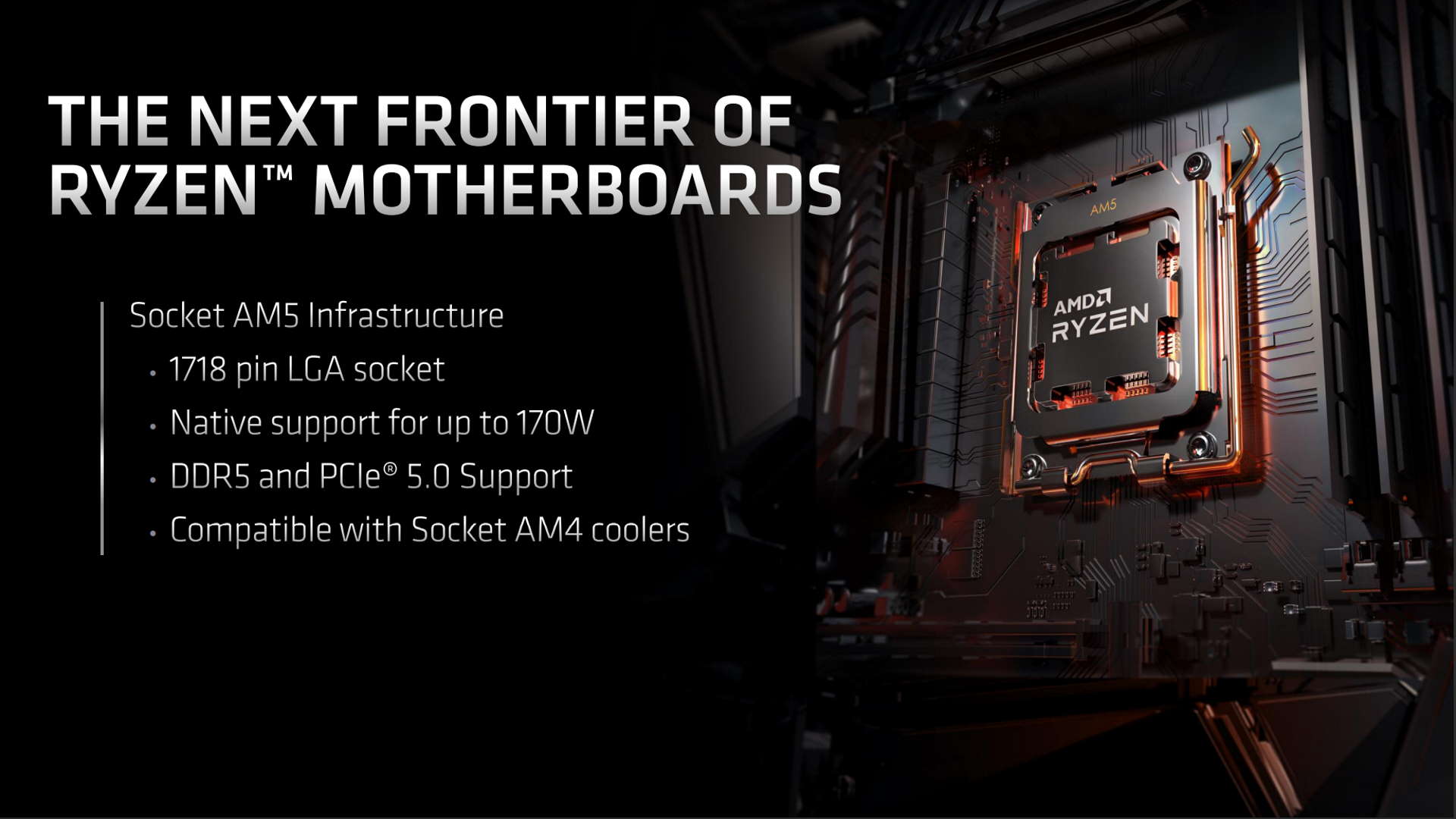
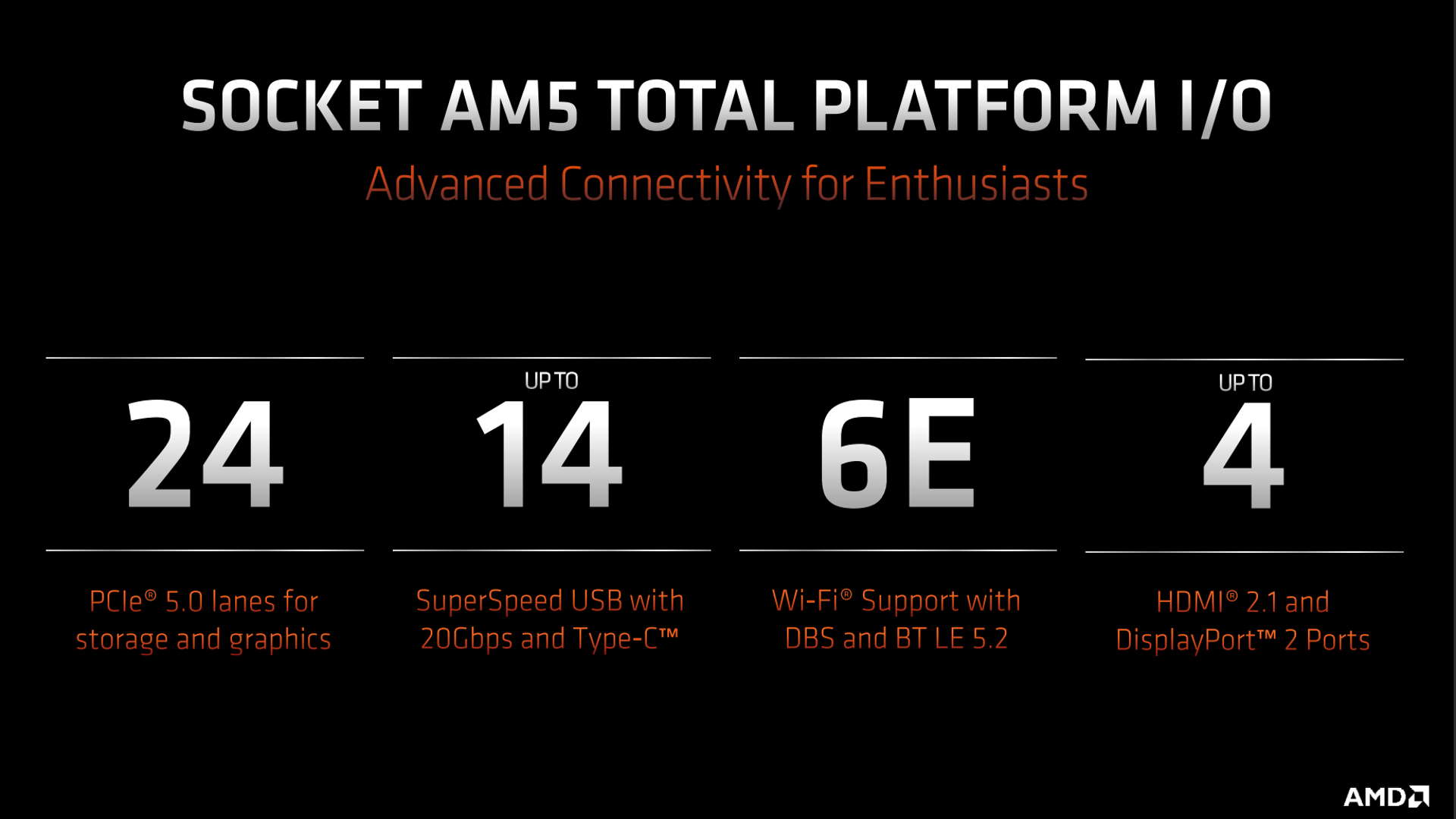
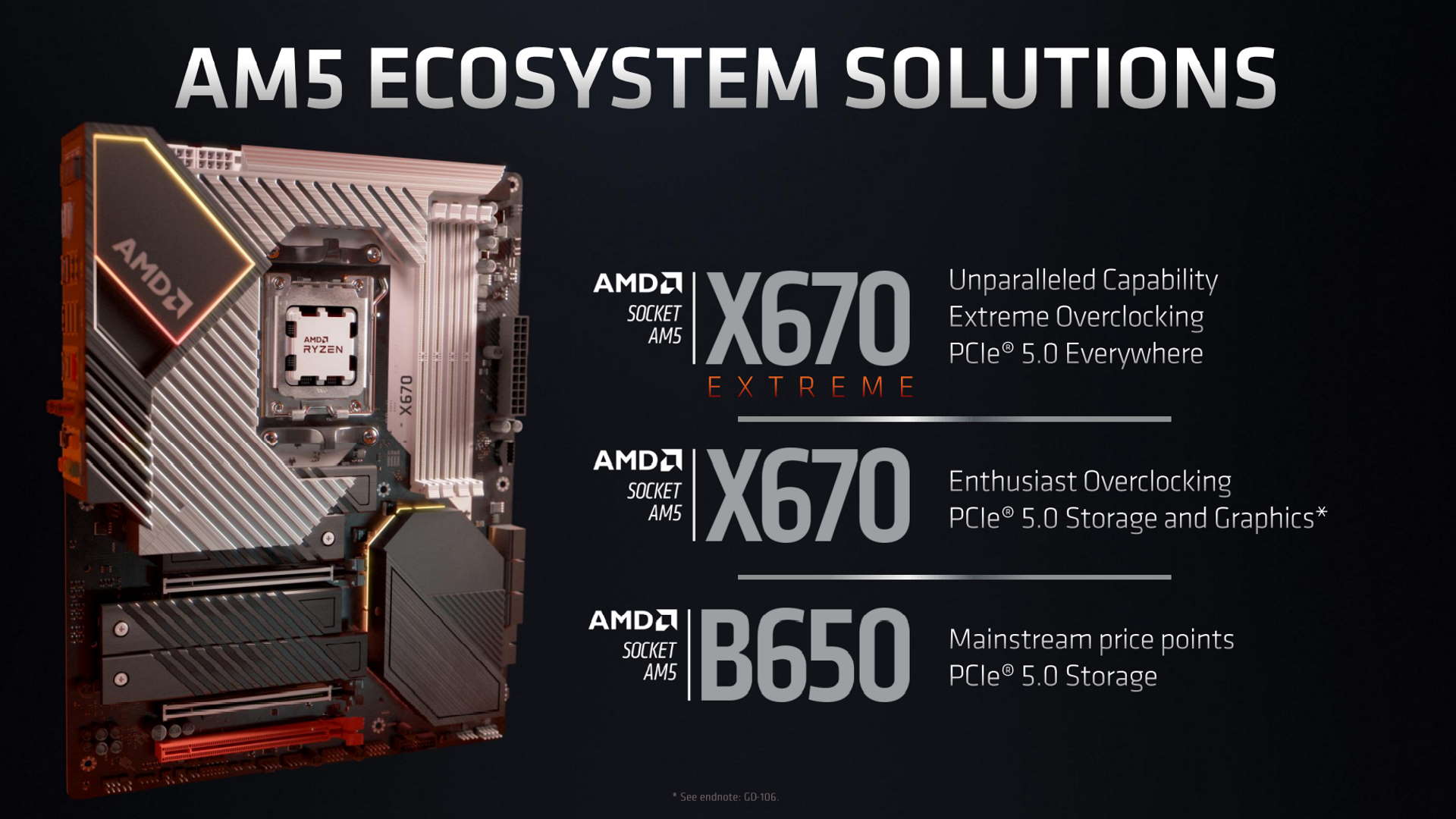
X670 Extreme
This is the top chipset, designed to deliver the best of the best to those who can afford it. It will come with dual-channel DDR5 support "with the most extreme overclocking headroom," according to David McAfee. AMD's corporate VP and GM of desktop PC. And, speaking of overclocking, the X670E boards will inevitably come with the most power phases "to push the limits of performance and overclocking."
With that you also get up to 24 lanes of PCIe 5.0 support (split between CPU and chipset, however), with two full GPU slots featuring Gen5 support, and one Gen5 storage port.
X670
The straight X670 chipset is designed "for the bulk of Ryzen enthusiasts and their gaming builds," says McAfee, and will come with at least one PCIe 5.0 M.2 slot for next-gen storage.
On the graphics side, however, he states that "most" boards will come with a Gen5 primary graphics card slot, though Hallock tells us in the pre-briefing that "graphics Gen5 will be optional, if it doesn't have Gen5 on that board it will, of course, be PCIe Gen4"
B650
This is the mainstream, most cost effective chipset, and as ever is designed to offer a balance of features and capabilites. You are guaranteed, however, to get at least one PCIe 5.0 SSD slot, which means no matter which motherboard you pick in the AM5 family, it will have access to the latest SSD storage options, and presumably peak performance with SmartAccess Storage/DirectStorage.
There is no PCIe 5.0 on the graphics side, with PCIe 4.0 being there across the board on B650.

Best CPU for gaming: The top chips from Intel and AMD
Best gaming motherboard: The right boards
Best graphics card: Your perfect pixel-pusher awaits
Best SSD for gaming: Get into the game ahead of the rest
It's worth noting that while the B650 is the lower-cost option for your Zen 4 PC builds, you will still need expensive DDR5 memory to get it running, as there is no option on any of the chipsets to have DDR4 support, baked as it is into the CPU.
"We are not supporting DDR4," Hallock tells us, "this is an exclusively DDR5 platform. We're super-excited about what DDR5 can offer, from both a performance and power perspective."
That might make it tough to build a really affordable Ryzen 7000 machine in the short term, but prices of DDR5 will inevitably fall, and this is a platform destined to be around for many years to come.
We still don't have an exact date for the launch of the new Ryzen 7000-series running on the Zen 4 architecture, or the boards they'll live in. AMD is still just giving us a "Fall" timeframe for the platform's release. But when they come, it really will be a new dawn for AMD's processor division in many ways.

Dave has been gaming since the days of Zaxxon and Lady Bug on the Colecovision, and code books for the Commodore Vic 20 (Death Race 2000!). He built his first gaming PC at the tender age of 16, and finally finished bug-fixing the Cyrix-based system around a year later. When he dropped it out of the window. He first started writing for Official PlayStation Magazine and Xbox World many decades ago, then moved onto PC Format full-time, then PC Gamer, TechRadar, and T3 among others. Now he's back, writing about the nightmarish graphics card market, CPUs with more cores than sense, gaming laptops hotter than the sun, and SSDs more capacious than a Cybertruck.
